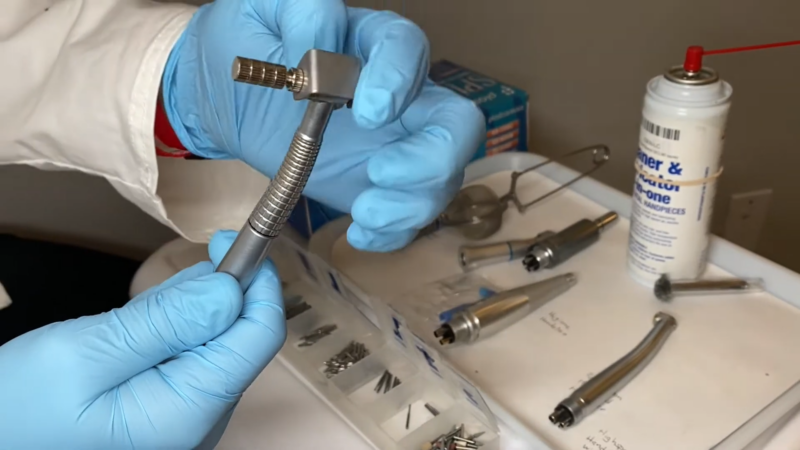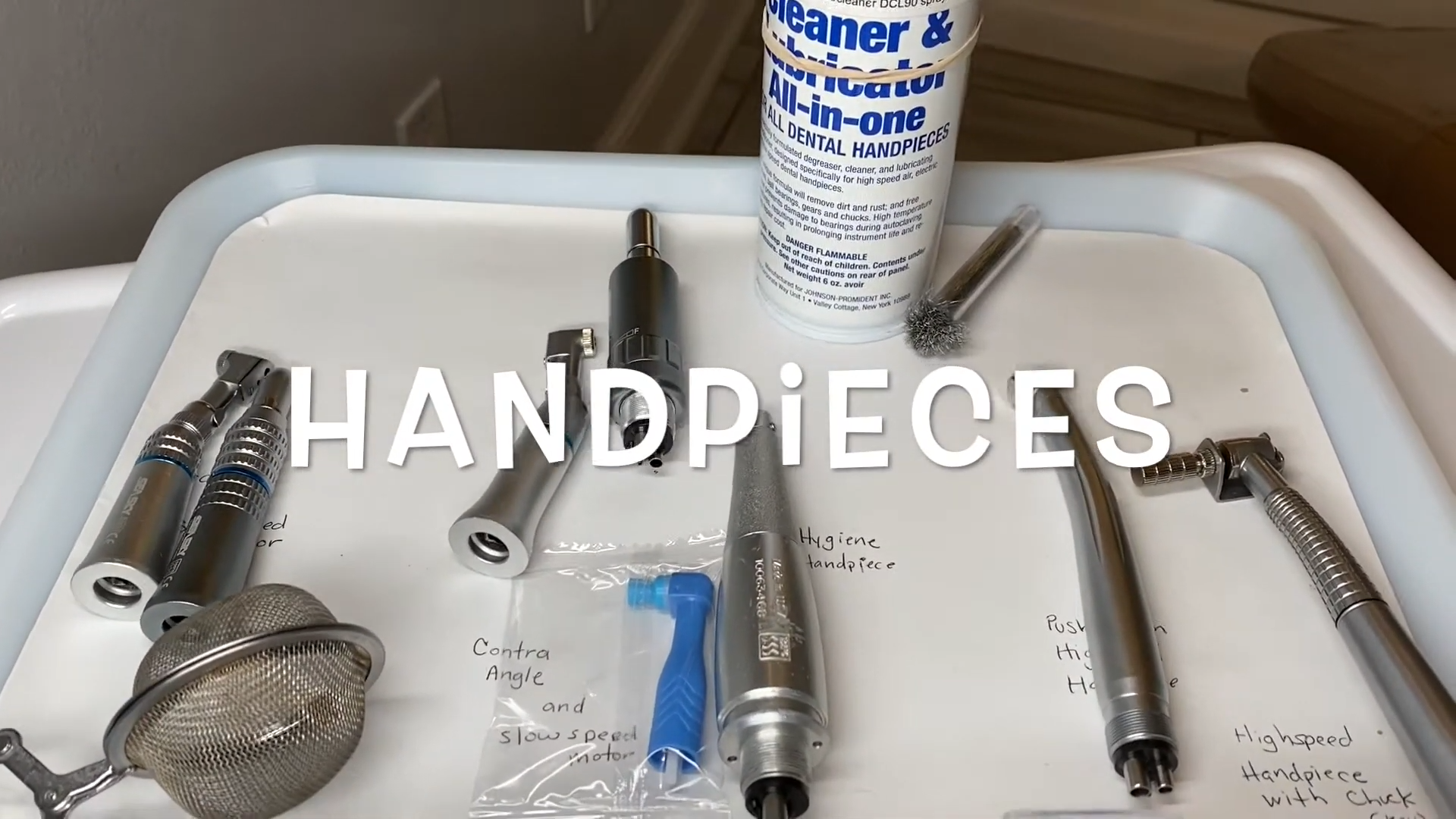Dental handpieces are essential tools in dentistry, each designed for specific tasks to ensure precision and efficiency.
Understanding their functions and appropriate uses is crucial for dental professionals.
Today, we want to shine a light on the commonest handpieces and learn about their function.
1. High-Speed

High-speed handpieces are vital in dentistry due to their remarkable speed, ranging from 180,000 to 450,000 RPM.
These handpieces are primarily air-driven or electric, with each type offering distinct advantages.
Air-driven handpieces are lightweight and provide excellent tactile feedback, while electric versions deliver consistent torque and power.
An integrated water spray feature is essential for cooling, and preventing heat damage to the tooth and surrounding tissues during procedures.
2. Low-Speed
Low-speed handpieces operate up to 80,000 RPM, making them ideal for procedures requiring more control and less speed.
These handpieces come with an inbuilt motor and a variety of attachments, making them highly versatile.
Common uses include the removal of soft decay, polishing and finishing cavity preparations and trimming dentures.
Switching between different attachments adds to their functionality, allowing dentists to perform a wide range of procedures with a single handpiece.
3. Electric
Electric handpieces are renowned for their consistent torque and power, providing a smoother and quieter operation compared to their air-driven counterparts.
That makes them particularly suitable for intricate dental procedures where precision is paramount.
The steady performance of electric handpieces ensures that dental professionals can work efficiently without the interruptions that can occur with air-driven models.
4. Endodontic
Endodontic hand pieces are specialized tools used in root canal treatments and related procedures.
These hand pieces are designed with specific gear transmission ratios that allow for delicate work within the intricate canal system of a tooth.
The precision and control provided by endodontic hand pieces are essential for successful root canal treatments, ensuring that all infected material is removed and the canal is thoroughly cleaned and shaped.
5. Surgical

Surgical hand pieces are engineered for tooth extractions, bone modeling, and other surgical procedures.
They are designed to deliver high torque, which is necessary for penetrating bone and performing other demanding tasks.
The robust construction and powerful performance of surgical hand pieces make them indispensable for oral surgeons, allowing them to perform complex surgical procedures with accuracy and efficiency.
6. Implant
Implant hand pieces are specifically designed for the placement of dental implants.
These hand pieces typically operate at slower speeds but with high torque, often featuring a 20:1 gear ratio.
The precise control and power of implant hand pieces are crucial for the successful placement of implants, ensuring that they are securely anchored into the bone.
These hand pieces are usually electric, providing consistent performance and reliability during implant-related surgical procedures.
The Bottom Line
Choosing the right dental hand piece is crucial for providing high-quality dental care that follows inventions in industry.
By understanding the specific functions and advantages of each type of hand piece, dental professionals can select the best tools for their practice needs, ensuring efficiency, precision, and optimal patient outcomes.

